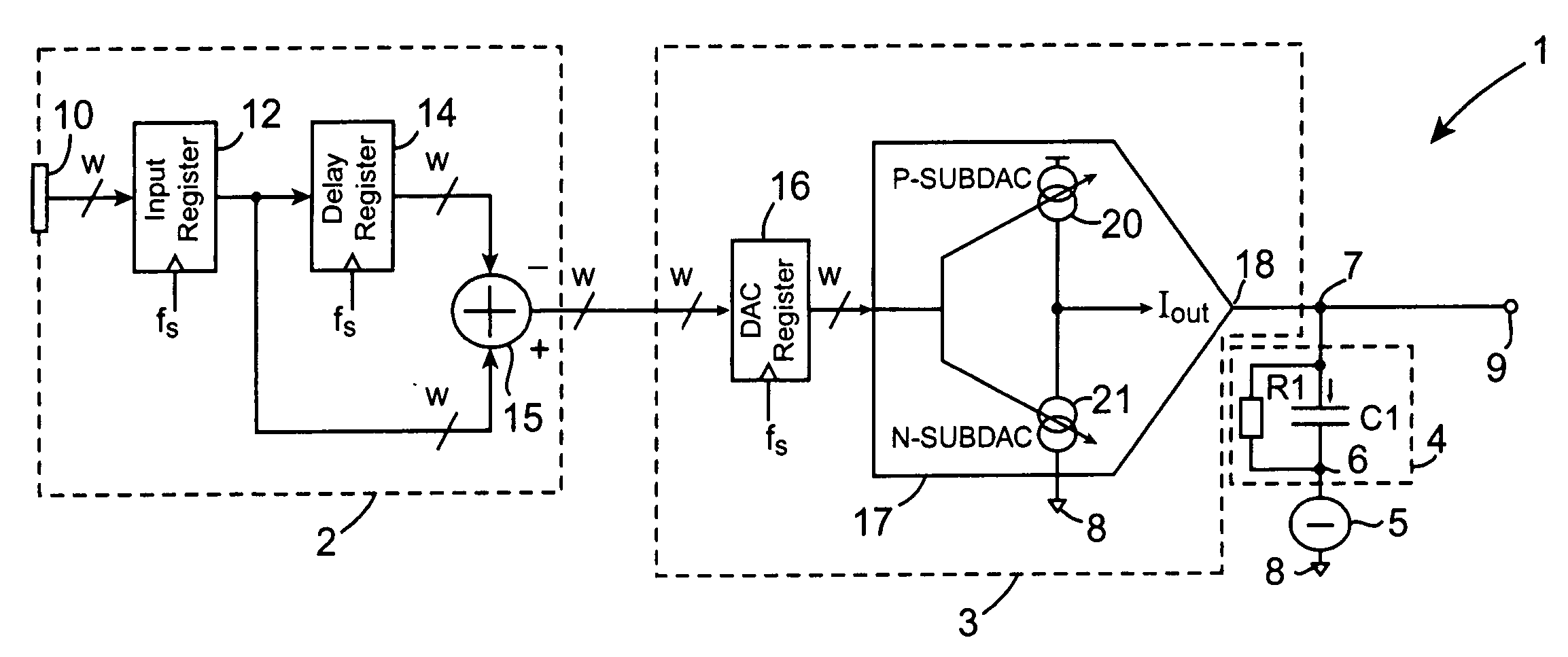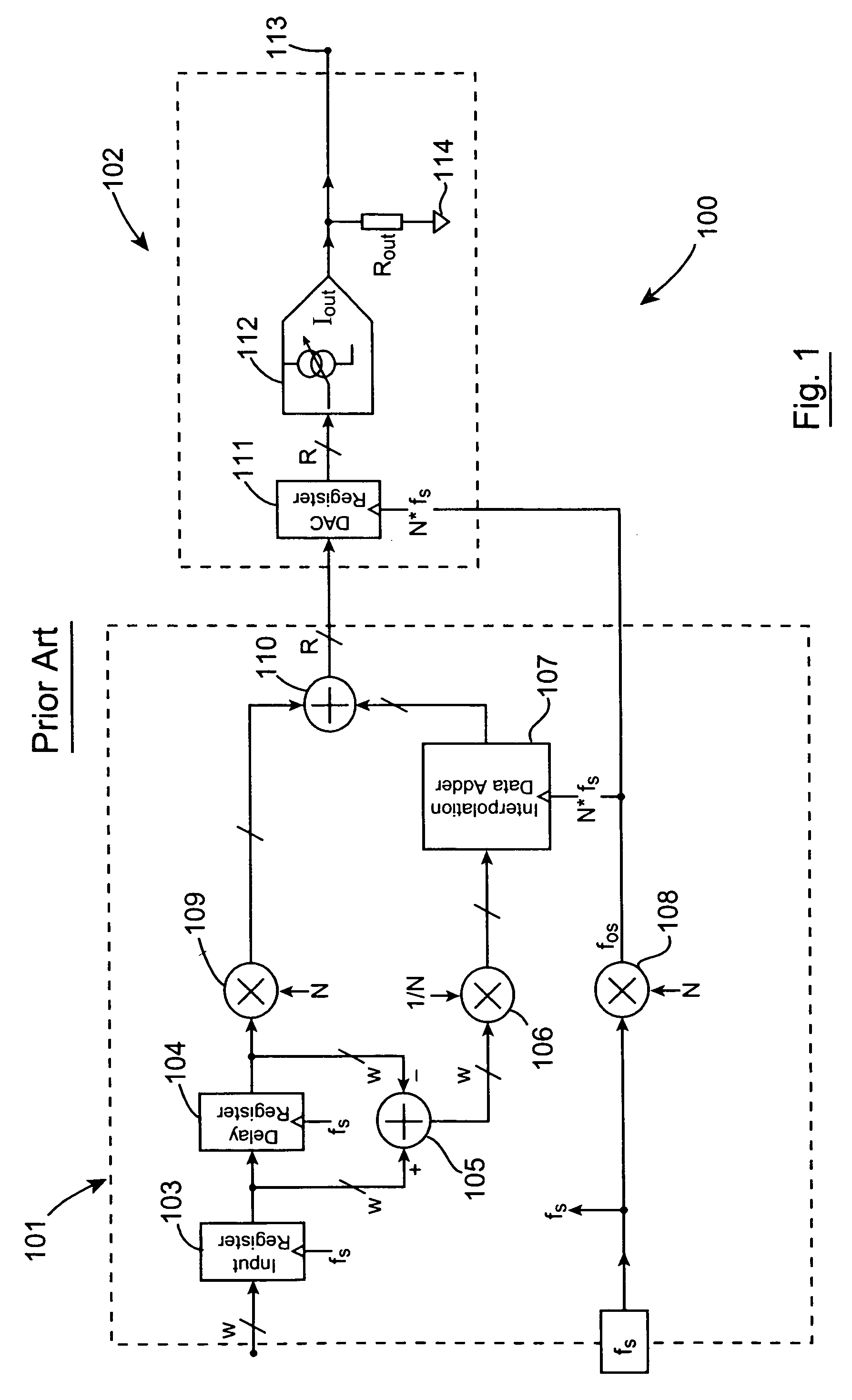Method and a digital-to-analog converter for converting a time varying digital input signal
a digital input signal and converter technology, applied in digital-analog converters, transmission systems, instruments, etc., can solve the problems of limited degree to which the sampling rate and the resolution of a dac can be increased, and achieve the reduction of waveform errors in the analogue voltage output signal, the resolution of the current steering dac is not increased, and the resolution of the current steering dac is reduced.
- Summary
- Abstract
- Description
- Claims
- Application Information
AI Technical Summary
Benefits of technology
Problems solved by technology
Method used
Image
Examples
Embodiment Construction
[0114] Referring to the drawings and initially to FIG. 2, there is illustrated a digital-to-analogue converter (DAC) according to the invention, indicated generally by the reference numeral 1, for converting a time varying digital input signal comprising consecutive data samples provided to the DAC 1 at a data sampling rate fs into a reconstructed continuously linearly interpolated analogue voltage output signal of substantially infinite resolution. The DAC 1 comprises a digital signal processing circuit 2 for receiving the data samples at the data sampling rate fs, and for sequentially determining difference values between consecutive data samples of the digital input signal on respective clock cycles of the data sampling rate fs. A current steering DAC circuit 3 sequentially converts the difference values determined by the digital signal processing circuit 2 into corresponding proportional analogue current signals, the values of which are proportional to the respective correspondi...
PUM
 Login to View More
Login to View More Abstract
Description
Claims
Application Information
 Login to View More
Login to View More - R&D
- Intellectual Property
- Life Sciences
- Materials
- Tech Scout
- Unparalleled Data Quality
- Higher Quality Content
- 60% Fewer Hallucinations
Browse by: Latest US Patents, China's latest patents, Technical Efficacy Thesaurus, Application Domain, Technology Topic, Popular Technical Reports.
© 2025 PatSnap. All rights reserved.Legal|Privacy policy|Modern Slavery Act Transparency Statement|Sitemap|About US| Contact US: help@patsnap.com



